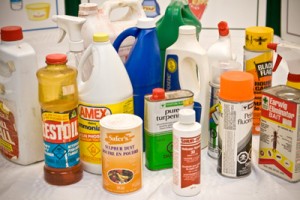Poisons are usually associated with chemicals in the workplace, gases and illegal drugs; however, it is not popularly known that even common household items may lead to poisoning. These poisonous household items can be inhaled, ingested or overdosed, especially if used improperly. There are thousands of cases from poisoning from household items each year. Just because there is no warning label on a package, it does not necessarily mean that it is safe. Immediate first aid must be administered to anyone that is suspected of poisoning from household items
Disclaimer: This article is for information only. This should not be used for diagnosis or treatment. It is highly recommended to take first aid classes and CPR courses to learn proper management for exposure to poisonous household items.
Commonly Found Household Items that may be Poisonous
Many household items in the list of poisonous materials to be mentioned below may come as a surprise to people. It is common for young children to ingest these things out of curiosity, thus it should be kept out of their reach as much as possible.
- Kitchen
- Ammonia
- Bug sprays
- Cleaners
- Disinfectants
- Drain openers
- Polish
- Rat poison
- Bathroom
- Aftershave lotion
- Hair colors
- Hydrogen peroxide
- Deodorants
- Mouthwash
- Ointments
- Over-the-counter and prescription medicines
- Shampoo or other hair products
- Soap
- Bedroom
- Cosmetics, such as perfumes, nail polish remover
- Ethyl or isopropyl alcohol
- Laundry
- Bleaches
- Cleaning fluids
- Detergents
- Garage
- Fertilizer
- Gasoline
- Paint
- Pesticides
Symptoms of Poisoning from Household Items
Symptoms for poisoning are generally the same for all types of poisons. These include:
- Redness or burns around the mouth and lips, or on the clothing or within the immediate area
- Breaths that smell like chemicals
- Abdominal pain
- Vomiting and diarrhea
- Loss of appetite
- Loss of bladder control
- Difficult breathing
- Sleepiness
- Confusion
- Seizures
First Aid Management from Poisonous Household Items
If anyone is suspected of getting poisoned by household items, call for emergency help immediately. In the meantime, while waiting for help to arrive, the following steps should be done immediately:
- Check and monitor for vital signs (airway, breathing, circulation). Initiate CPR if necessary.
- If the person is still standing up, assist the person into a comfortable position, preferably lying down and rolled on the left side.
- If the person vomits, clear the airway. To do this, get a piece of clean cloth and wrap around the fingers. Clean the mouth and if possible, the throat.
- Do not induce vomiting unless advised by dispatcher or poison control.
- If the person begins to have seizures, treat for seizures.
- Remove any remaining poison on the clothing and flush any poison on the skin.
How to Prevent Poisoning from Household Items

- Store household chemicals in a padlocked cabinet, somewhere unreachable by children and pets. Never leave them unattended.
- Keep medications out of reach and keep them in their original containers.
- Always read the product label first
- Label all poisonous household items.
